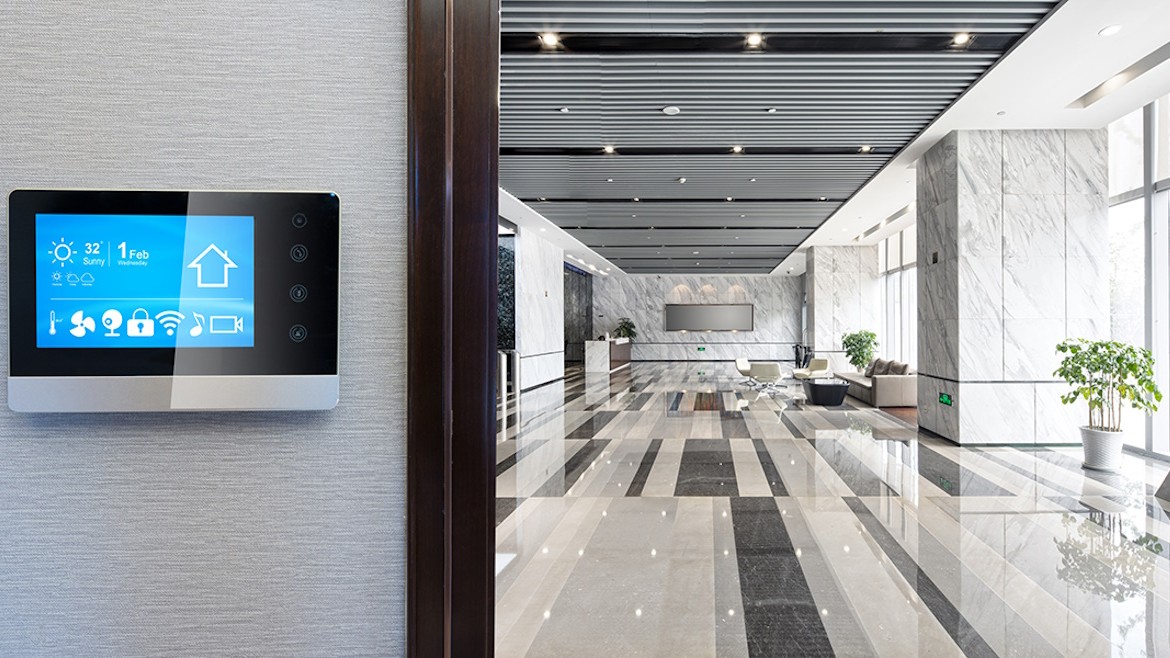From coast to coast, heat records fell like the sweat from our brows this past summer. Globally, the season began with the warmest June in 175 years of recordkeeping. That capped 13 consecutive months of record-high global temperatures, according to the National Oceanic and Atmospheric Administration, which says 2024 overall has a nearly 60 percent chance of following suit.
Buildings already account for a third of worldwide (and US) energy consumption and a quarter of carbon emissions, with HVAC systems accounting for 38 percent of total building energy usage. As air conditioners work overtime to keep offices and factories cool and functional during more intense heat waves, the energy needed for space cooling could triple by 2050 without better management, the United Nations reported last year.
There is hopeful news, however. Although they are typically the largest consumers of energy in commercial facilities, a new study found that HVAC systems could also be key drivers in a novel solution that would reduce the costs and environmental impacts of building energy use while providing HVAC companies with new opportunities for business collaboration.
The study was commissioned by the DesignLights Consortium (DLC), a non-profit that drives quality and efficiency in the commercial lighting industry and is heavily focused on expanding deployment of networked lighting controls (NLC) as an essential building decarbonization strategy.
A key value of NLCs are their ability to detect when building spaces are vacant through occupancy sensors, and then turn off or dim lighting when and where it’s not needed to save energy and consequent carbon emissions. Expanding upon previous research showing that adding NLCs can boost energy efficiency of LED lighting projects by about 50%, the DLC’s 2023 study concluded that even deeper energy savings are possible through integration of controlled LED lighting with HVAC systems. The study, “Economic Potential of Networked Lighting Controls in Commercial Buildings: Tapping the Added Value of HVAC Connections”, showed that total electric energy consumption in commercial buildings can drop by up to 20% when lighting controls are paired with HVAC systems to deliver occupancy signals.
The DLC’s research indicated the most potential value for savings through HVAC and NLC integration is in large offices, retail, healthcare, and other high-energy use buildings. The study team also found that, without the savings from HVAC, lighting savings alone might not be cost effective.
Arizona and Connecticut – two states with robust energy efficiency programs but different climates and electricity prices– served as research models and the findings revealed significant value through NLC-HVAC integration in both states. Promoting NLC-HVAC integration through energy efficiency program incentives could save businesses roughly $217 million in Arizona and $1.2 billion in Connecticut over six years (through 2030), the study found. (Energy savings were actually larger in Arizona, but the financial value of the energy was smaller due to Arizona’s low electricity prices).
Results were compelling enough that the DLC (whose work influences the design of commercial energy efficiency programs across North America) is encouraging utilities and other energy efficiency programs to update their rebate structures to capture these significant energy savings and decarbonization opportunities.
Implementing the findings and recommendations of the DLC study would yield new opportunities for HVAC contractors, whose expertise will be required to set up building management and HVAC systems to receive occupancy signals from lighting control systems and trigger appropriate actions such as widening temperature set points and/or reducing ventilation rates in unoccupied areas. Communication protocols, control points, and zones are among the technical issues HVAC and lighting contractors will need to collaborate and agree on to capture the full energy savings possible through HVAC-NLC integration.
To further this goal, the DLC is currently finetuning a new toolkit designed to jumpstart and improve communications between the HVAC industry and commercial lighting energy efficiency programs. Development of the NLC-HVAC Control Integration Toolkit grew out of an External Systems Integration Working Group comprising experts across the lighting, HVAC and utility industries, which the DLC hosted in 2023. The group identified a lack of communication between people working on lighting controls and those working on HVAC controls as a major market barrier.
With features such as a handbook on cross-industry information sharing and templates to guide project-specific NLC-HVAC integration and rebate and incentive procurement, the toolkit is meant to pave the way for DLC member efficiency programs across North America to create or expand incentives for NLC-HVAC integration.
The DLC will offer a preview of the NLC-HVAC Control Integration Toolkit at its Controls Summit in Milwaukee in October and is aiming to finalize the resource by the end of 2024, after which it provided to DLC members and available to other interested parties by request. We anticipate that efficiency programs will, in turn, make it available to their HVAC trade allies beginning next year.
Interested in learning more? Keep an eye on the DLC website this fall for updates on the toolkit and other information regarding the value of integrating HVAC and lighting controls. Also, please join Ron Bernstein and me in Orlando at our workshop “Will HVAC & Lighting Work Together for Better Occupancy Data & Energy Savings?” at the AHR Expo in February 2025.
Whether you require installation, repair, or maintenance, our technicians will assist you with top-quality service at any time of the day or night. Take comfort in knowing your indoor air quality is the best it can be with MOE heating & cooling services Ontario's solution for heating, air conditioning, and ventilation that’s cooler than the rest.
Contact us to schedule a visit. Our qualified team of technicians, are always ready to help you and guide you for heating and cooling issues. Weather you want to replace an old furnace or install a brand new air conditioner, we are here to help you. Our main office is at Kitchener but we can service most of Ontario's cities
Source link




Add Comment